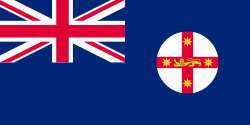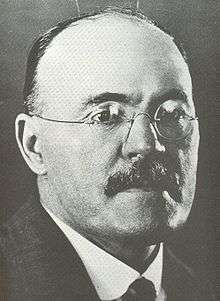New South Wales state election, 1927
New South Wales state election, 1927

|
| 8 October 1927 (1927-10-08) |
|
|
|

|
| Legislative Assembly after the election |
|
|
The 1927 New South Wales state election to elect the 90 members of the 28th Legislative Assembly was held on 8 October 1927. During the previous parliament the voting system, which had been a form of proportional representation with multi-member seats and a single transferable vote (modified Hare-Clark), was changed to single member constituencies with optional preferential voting. Severe divisions occurred within the Australian Labor Party caucus in the four months prior to the election (see Lang Labor) and a caretaker government composed of the supporters of the Premier of New South Wales and party leader, Jack Lang was in power at the time of the election.
As a result of the election the Lang government was defeated and a Nationalist/Country Party coalition government led by Thomas Bavin and Ernest Buttenshaw was formed with a parliamentary majority of 1 and the usual support of the 2 Nationalist independents. The Parliament first met on 3 November 1927, and ran its maximum term of 3 years. Lang remained the leader of the Labor Party throughout the Parliament.
Key dates
| Date |
Event |
| 7 September 1927 |
The Legislative Assembly was dissolved, and writs were issued by the Governor to proceed with an election. |
| 14 September 1927 |
Nominations for candidates for the election closed at noon. |
| 8 October 1927 |
Polling day. |
| 29 October 1927 |
The writs were returned and the results formally declared. |
| 3 November 1927 |
Opening of 28th Parliament. |
Results
|
New South Wales state election, 29 October 1927
Legislative Assembly
<< 1925 — 1930 >> |
| Enrolled voters |
1,394,254[1] |
|
|
| Votes cast |
1,135,681 |
|
Turnout |
82.54 |
+13.47 |
| Informal votes |
15,086 |
|
Informal |
1.31 |
–2.06 |
| Summary of votes by party |
| Party |
Primary votes |
% |
Swing |
Seats |
Change |
| |
Labor |
488,306 |
43.00 |
–2.99 |
40 |
–6 |
| |
Nationalist |
437,050 |
38.48 |
+1.41 |
33 |
+1 |
| |
Country |
100,963 |
8.89 |
–2.58 |
13 |
+4 |
| |
Independent Labor |
32,217 |
2.84 |
+2.58 |
2 |
+2 |
| |
Ind. Nationalist |
30,061 |
2.65 |
+2.06 |
2 |
+1 |
| |
Protestant Labor |
7,264 |
0.64 |
–1.47 |
0 |
–1 |
| |
Independent Country |
4,316 |
0.38 |
+0.38 |
0 |
±0 |
| |
Constitutionalist |
106 |
0.01 |
+0.01 |
0 |
±0 |
| |
Independents |
35,398 |
3.12 |
+1.01 |
0 |
±0 |
| Total |
1,135,681 |
|
|
90 |
|
- 1 There were 1,409,493 enrolled voters, but 15,239 were enrolled in a single uncontested Country-held electorate.
References
Melbourne University Press Melbourne ISBN 0-522-84700-5 OCLC 34416531
See also


